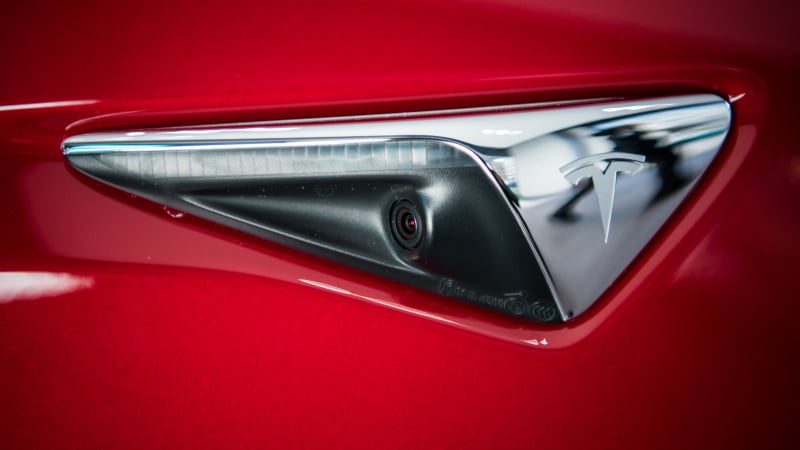Tesla to stop using ultrasonic sensors later this year

Love or hate Elon Musk, there’s no denying that Tesla’s vehicles are impressive from a technical standpoint. Their electric drivetrains offer more range and power than almost anything else on sale today, but there are some real and reasonable concerns around its semi-autonomous driving functions. The automaker seems unfazed by the investigations and litigation, announcing Tuesday that it would remove a group of sensors from its cars going forward, leaving them only with cameras to navigate the world around them.
Tesla’s initial sensor suite included several cameras, radar, and 12 ultrasonic sensors (USS). However, the automaker will remove USS from the Model 3 and Model Y this year before doing the same with the Model S and Model X in 2023. The move may save money for Tesla, and it will certainly relieve some of the pressure on the strained microchip supply. Still, it won’t be a positive for people who already think the automaker oversells the capabilities of its Autopilot and Full Self-Driving tech.
This being Tesla, there are some downsides to the transition. Vehicles with USS have full access to features like Summon/Smart Summon, Autopark, and Park Assist. Tesla models lacking those sensors in the future will have limited access to those features until the automaker issues software updates to enable and improve their functionality. The automaker noted that the temporary limits on some functions wouldn’t change the vehicles’ crash test scores.
It’s easy to jump back on the Tesla-hate bandwagon and mock the automaker for slashing features out of expensive luxury EVs (and maybe for some other sound reasons), but there’s more going on here. Tesla believes in its camera-based technologies, saying people designed our roads for people. Tesla’s opinion is that humans navigate streets using vision and a brain, so a car should be able to do the same with cameras and computers on board.
Related video:



